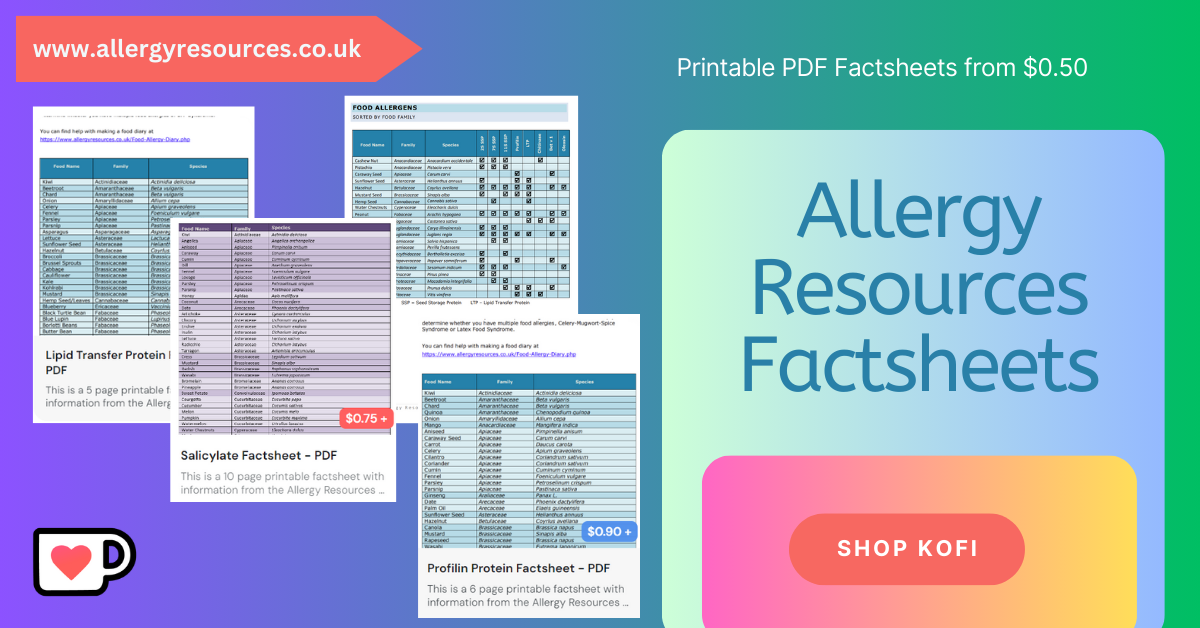
YUZU ALLERGY
Key Allergens
Yuzu is a citrus fruit in the Rutaceae family, which includes lemons, limes, oranges and grapefruit.
It used to be primarily associated with Japanese cuisine, but it is now being used more as an ingredient in everyday items.
There have been case studies of anaphylaxis from eating yuzu. The link has not yet been established, but could either be linked to pectin, which yuzu contains a lot of or due to the seeds in yuzu, which contain 2S Seed Storage Proteins, which are usually associated with seed and nut allergies.
Like lemons, yuzu contains limonene, which is a component of the oils found in the peel of certain fruits. Limonene is a well known skin irritant - so may cause sufferers to react to the skin whilst being able to eat or drink the fruit.
Like other citrus fruits yuzu contain furanocoumarins (but to a lesser extent than other fruits). These chemicals can get on the skin and in combination with ultraviolet light (sunlight) can cause a sunburn like rash. Furanocoumarins are found in higher concentrations in fresh herbs and are natural irritants which can cause allergic contact dermatitis. This is more common in occupations where you are frequently coming into contact with the food, like chefs, cooks, growers and pickers.
It used to be primarily associated with Japanese cuisine, but it is now being used more as an ingredient in everyday items.
There have been case studies of anaphylaxis from eating yuzu. The link has not yet been established, but could either be linked to pectin, which yuzu contains a lot of or due to the seeds in yuzu, which contain 2S Seed Storage Proteins, which are usually associated with seed and nut allergies.
Like lemons, yuzu contains limonene, which is a component of the oils found in the peel of certain fruits. Limonene is a well known skin irritant - so may cause sufferers to react to the skin whilst being able to eat or drink the fruit.
Like other citrus fruits yuzu contain furanocoumarins (but to a lesser extent than other fruits). These chemicals can get on the skin and in combination with ultraviolet light (sunlight) can cause a sunburn like rash. Furanocoumarins are found in higher concentrations in fresh herbs and are natural irritants which can cause allergic contact dermatitis. This is more common in occupations where you are frequently coming into contact with the food, like chefs, cooks, growers and pickers.
Food Intolerances


Bottled yuzu juice can be high in sulphites. Fresh yuzi is lower in sulphites. Sulphites are inorganic salts used in preservations and have the potential to cause symptoms of food intolerance to those sensitive to sulphites, this food intolerance is more common in asthmatics. An improvement in symptoms can be made with a change to a low sulphite diet.
Yuzu, like other citrus fruits, is a low FODMAP food. FODMAP stands for Fermentable oligosaccharides, disaccharides, monosaccharides and polyols. Foods high in FODMAPs can cause symptoms of food intolerance, affecting the gastro intestinal system and this can be mistaken for a true IgE food allergy.
You can read more about Food Intolerances on the dedicated Food Intolerance Page.
Associated Syndromes
Eating yuzu is also associated with phytophotodermatitis. This is a skin condition that occurs when a person gets the juice from the fruit on the skin and doesn't wash it off. The furocoumarins in the juice of the fruit are activated by the sun and cause an itchy rash on the skin.
Cross Reactivity
There is a case study which shows cross reactivity with yuzu from pectin and cashew nuts.
Other foods which contain 2S seed storage proteins are brazil nuts, buckwheat, cashews, cocoa, hazelnut, kiwi, lemon, mustard, peanut, pecan, pistachio, sesame, soya, tangerine and walnuts.
Note these food lists are not exhaustive, you can find the most up to date information on the Cross Reactivity Tool.
Other foods which contain 2S seed storage proteins are brazil nuts, buckwheat, cashews, cocoa, hazelnut, kiwi, lemon, mustard, peanut, pecan, pistachio, sesame, soya, tangerine and walnuts.
Note these food lists are not exhaustive, you can find the most up to date information on the Cross Reactivity Tool.
Resources
Websites
Anaphylaxis Campaign - Allergy to Fruit
Articles and Journals
A case of cashew nut related citrus seed allergy with suspected citrin involvement, 2024
Anaphylaxis in a pectin and cashew nut-allergic child caused by a citrus bath, 2022
Anaphylaxis to the Citrus Fruit Yuzu, 2015
Panonychus citri induced allergy among Yuzu farm workers in Koheung area, 2001
Let me know if you found any of these interesting or useful.
If you spot an article or research that you think is interesting you can message me or tag me on Facebook, Instagram or Twitter - links at the bottom of the page.